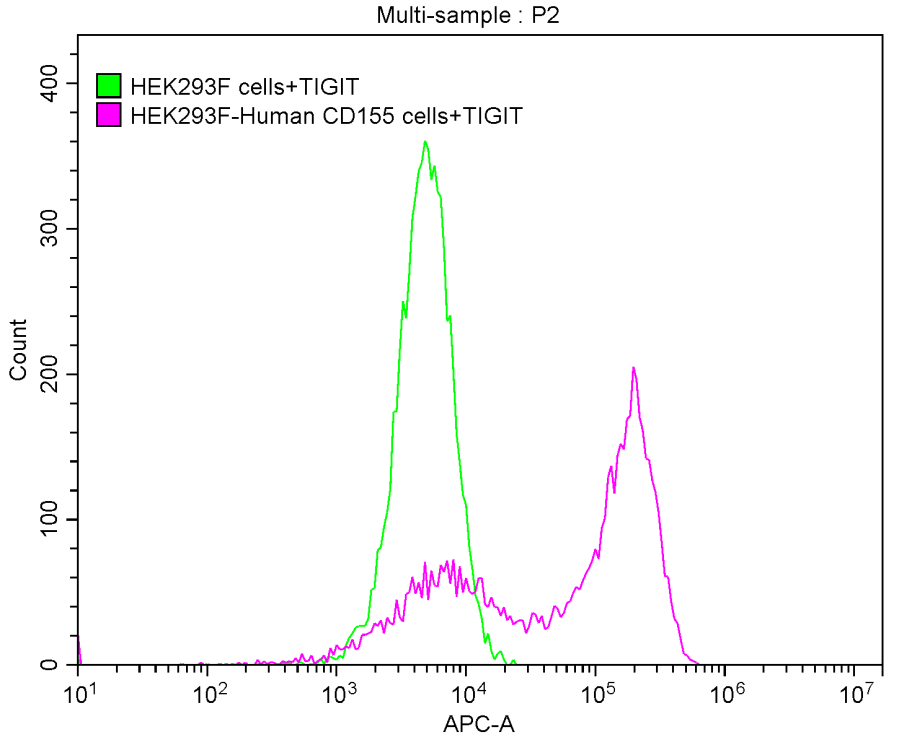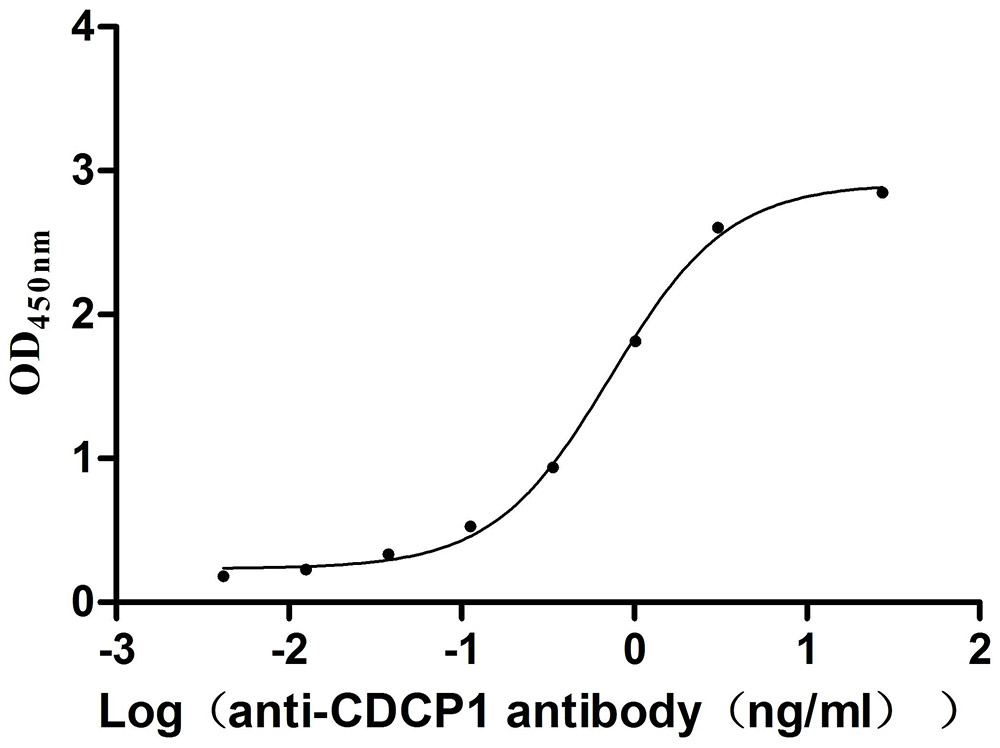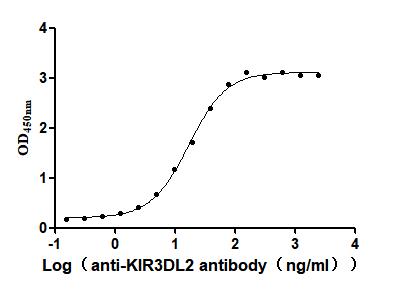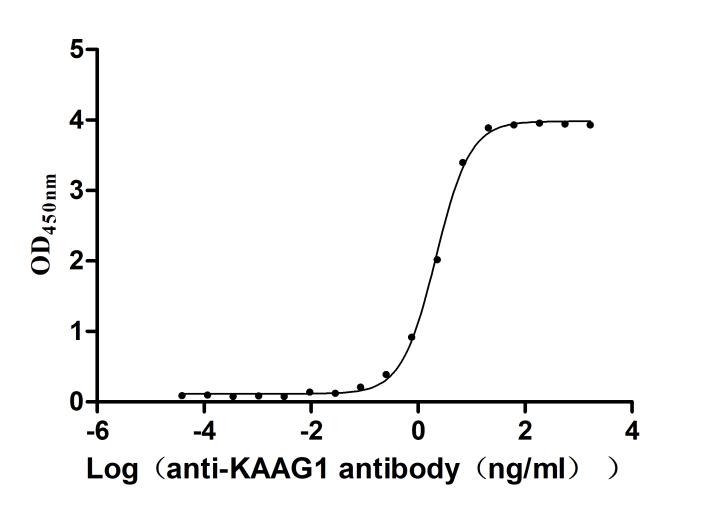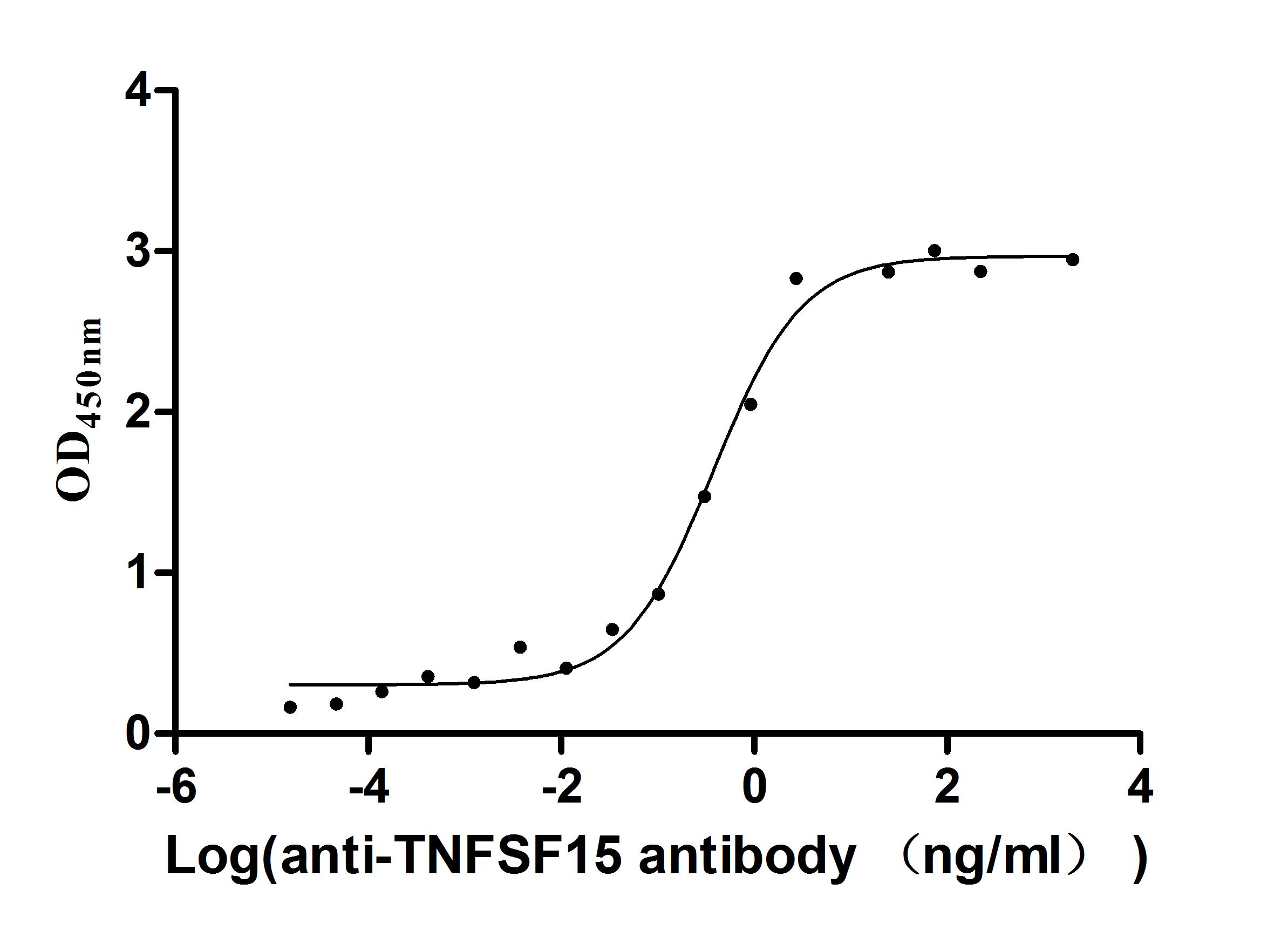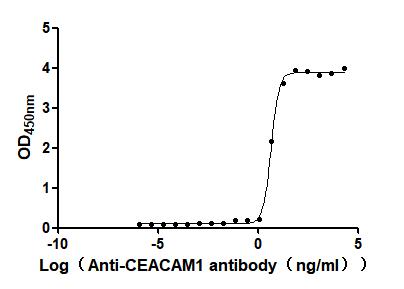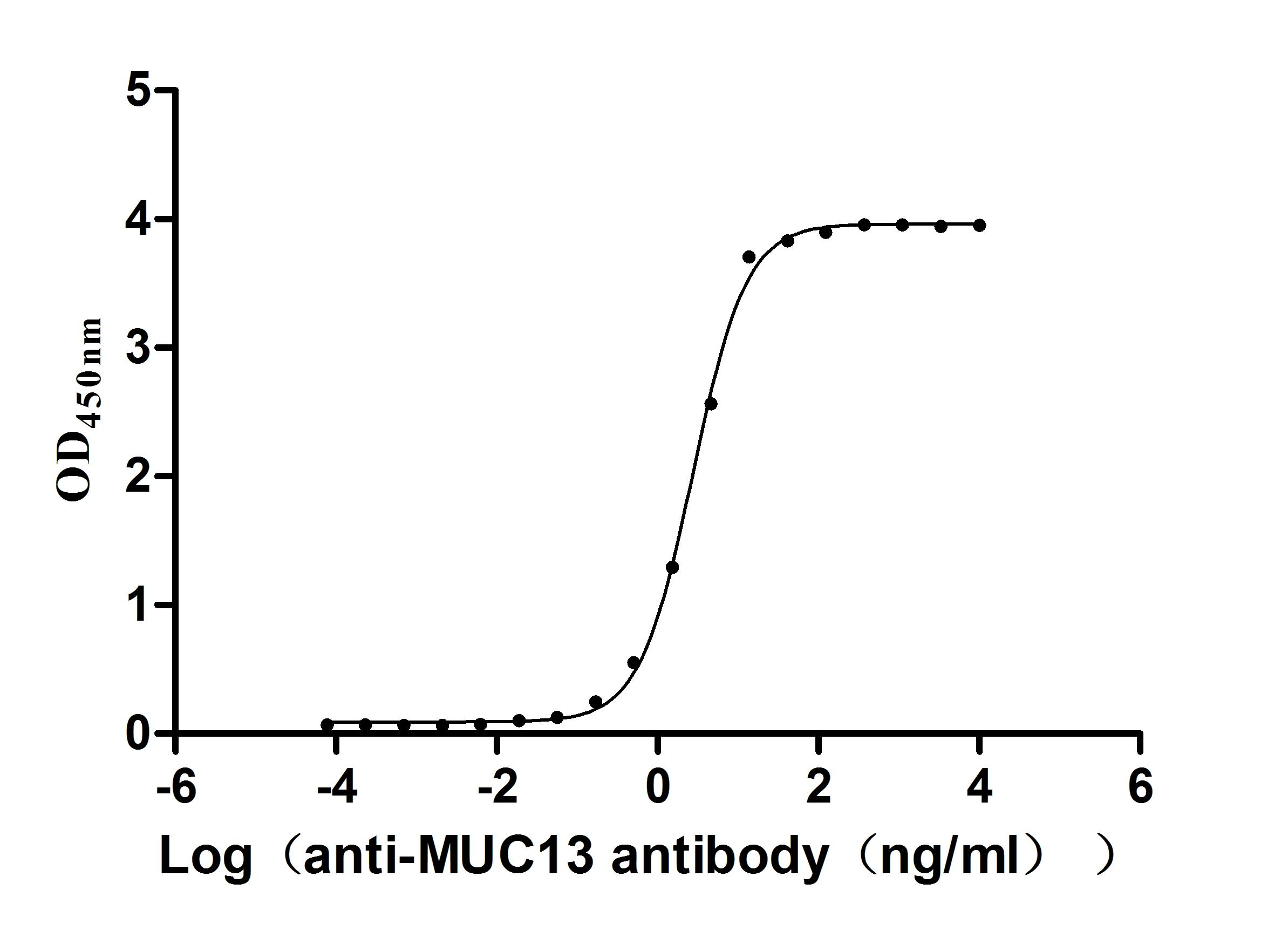Recombinant Escherichia coli Formamidopyrimidine-DNA glycosylase (mutM)
-
中文名称:大肠杆菌mutM重组蛋白
-
货号:CSB-YP361544ENV
-
规格:
-
来源:Yeast
-
其他:
-
中文名称:大肠杆菌mutM重组蛋白
-
货号:CSB-EP361544ENV-B
-
规格:
-
来源:E.coli
-
共轭:Avi-tag Biotinylated
E. coli biotin ligase (BirA) is highly specific in covalently attaching biotin to the 15 amino acid AviTag peptide. This recombinant protein was biotinylated in vivo by AviTag-BirA technology, which method is BriA catalyzes amide linkage between the biotin and the specific lysine of the AviTag.
-
其他:
-
中文名称:大肠杆菌mutM重组蛋白
-
货号:CSB-BP361544ENV
-
规格:
-
来源:Baculovirus
-
其他:
-
中文名称:大肠杆菌mutM重组蛋白
-
货号:CSB-MP361544ENV
-
规格:
-
来源:Mammalian cell
-
其他:
产品详情
-
纯度:>85% (SDS-PAGE)
-
基因名:mutM
-
Uniprot No.:
-
别名:mutM; fpg; b3635; JW3610Formamidopyrimidine-DNA glycosylase; Fapy-DNA glycosylase; EC 3.2.2.23; DNA-(apurinic or apyrimidinic site) lyase MutM; AP lyase MutM; EC 4.2.99.18
-
种属:Escherichia coli (strain K12)
-
蛋白长度:Full Length of Mature Protein
-
表达区域:2-269
-
氨基酸序列PELPEVETS RRGIEPHLVG ATILHAVVRN GRLRWPVSEE IYRLSDQPVL SVQRRAKYLL LELPEGWIII HLGMSGSLRI LPEELPPEKH DHVDLVMSNG KVLRYTDPRR FGAWLWTKEL EGHNVLTHLG PEPLSDDFNG EYLHQKCAKK KTAIKPWLMD NKLVVGVGNI YASESLFAAG IHPDRLASSL SLAECELLAR VIKAVLLRSI EQGGTTLKDF LQSDGKPGYF AQELQVYGRK GEPCRVCGTP IVATKHAQRA TFYCRQCQK
-
蛋白标签:Tag type will be determined during the manufacturing process.
The tag type will be determined during production process. If you have specified tag type, please tell us and we will develop the specified tag preferentially. -
产品提供形式:Lyophilized powder
Note: We will preferentially ship the format that we have in stock, however, if you have any special requirement for the format, please remark your requirement when placing the order, we will prepare according to your demand. -
复溶:We recommend that this vial be briefly centrifuged prior to opening to bring the contents to the bottom. Please reconstitute protein in deionized sterile water to a concentration of 0.1-1.0 mg/mL.We recommend to add 5-50% of glycerol (final concentration) and aliquot for long-term storage at -20℃/-80℃. Our default final concentration of glycerol is 50%. Customers could use it as reference.
-
储存条件:Store at -20°C/-80°C upon receipt, aliquoting is necessary for mutiple use. Avoid repeated freeze-thaw cycles.
-
保质期:The shelf life is related to many factors, storage state, buffer ingredients, storage temperature and the stability of the protein itself.
Generally, the shelf life of liquid form is 6 months at -20°C/-80°C. The shelf life of lyophilized form is 12 months at -20°C/-80°C. -
货期:Delivery time may differ from different purchasing way or location, please kindly consult your local distributors for specific delivery time.Note: All of our proteins are default shipped with normal blue ice packs, if you request to ship with dry ice, please communicate with us in advance and extra fees will be charged.
-
注意事项:Repeated freezing and thawing is not recommended. Store working aliquots at 4°C for up to one week.
-
Datasheet :Please contact us to get it.
相关产品
靶点详情
-
功能:Involved in base excision repair of DNA damaged by oxidation or by mutagenic agents. Acts as DNA glycosylase that recognizes and removes damaged bases. Has a preference for oxidized purines, such as 7,8-dihydro-8-oxoguanine (8-oxoG) and its derivatives such as guanidinohydantoin:C and spiroiminodihydantoin:C, however it also acts on thymine glycol:G, 5,6-dihydrouracil:G and 5-hydroxyuracil:G. Has AP (apurinic/apyrimidinic) lyase activity and introduces nicks in the DNA strand. Cleaves the DNA backbone by beta-delta elimination to generate a single-strand break at the site of the removed base with both 3'- and 5'-phosphates. Cleaves ssDNA containing an AP site.
-
基因功能参考文献:
- expression of the bacterial DNA repair protein FPG stably protects human lung cells from the mutagenic effects of CS by improving cells' capacity to repair damaged DNA. PMID: 24498234
- Structural and biochemical analysis of DNA helix invasion by the bacterial 8-oxoguanine DNA glycosylase MutM PMID: 23404556
- Fpg protein seemed to be very important in the repair of ultraviolet-C induced DNA lesions. PMID: 22732937
- structures reveal that MutM imposes the same extrusion-prone backbone conformation on the oxoG lesion irrespective of its 5'-neighbor while leaving the rest of the DNA relatively free to adjust to the particular demands of individual sequences PMID: 22465958
- demonstrates that it is feasible to increase resistance of human TM cell to endogenous oxidative damage by FPG gene transfection PMID: 21561236
- Over-expressed, purified and characterized two stable isotope-labeled DNA glycosylases, i.e., (15)N-labeled Escherichia coli formamidopyrimidine DNA glycosylase (Fpg) and (15)N-labeled human 8-oxoguanine-DNA glycosylase (hOGG1). PMID: 21356311
- examination of the structural and dynamic changes that occur in solution when Fpg binds DNA PMID: 15661656
- A base excision repair enzyme involved in the 8-oxoguanine (oxoG) repair pathway. PMID: 15979229
- when the enzyme encounters its true substrate, 8-oxoG.C, the complex enters the productive catalytic reaction after approximately 50 ms, partitioning the substrate away from the competing dissociation process PMID: 17209553
- The substrate specificity of two similar enzymes, MutM of E. coli and OGG1 of H. sapiens, is reported. PMID: 17536801
- The high affinity and efficient activity of EcFpg toward the hydantoin lesions suggest that EcFpg mediates repair of the lesions in vivo. PMID: 17655276
- Data show a lack of interaction of mutM with dnaX36 since the double dnaX36 mutM strains did not show any major changes in the frequency of G.CT.A transversions compared to the single dnaX36 strain. PMID: 18156258
- analysis of the the driving forces that dictate Fpg enzyme efficiency and specificity, which helps to elucidate the energy landscape for lesion recognition and repair PMID: 18172202
- Data show that processive cleavage by Fpg does not correlate with their substrate specificity and under nearly physiological salt conditions may be replaced with the distributive mode of action. PMID: 18672903
显示更多
收起更多
-
蛋白家族:FPG family
-
数据库链接:
KEGG: ecj:JW3610
STRING: 316385.ECDH10B_3817
Most popular with customers
-
Recombinant Human T-cell immunoreceptor with Ig and ITIM domains (TIGIT), partial (Active)
Express system: Mammalian cell
Species: Homo sapiens (Human)
-
Recombinant Mouse Prolactin receptor (Prlr), partial (Active)
Express system: Mammalian cell
Species: Mus musculus (Mouse)
-
Recombinant Mouse CUB domain-containing protein 1 (Cdcp1), partial (Active)
Express system: Mammalian cell
Species: Mus musculus (Mouse)
-
Recombinant Human Killer cell immunoglobulin-like receptor 3DL2 (KIR3DL2), partial (Active)
Express system: Mammalian cell
Species: Homo sapiens (Human)
-
Recombinant Human Kidney-associated antigen 1(KAAG1) (Active)
Express system: E.coli
Species: Homo sapiens (Human)
-
Express system: Mammalian cell
Species: Homo sapiens (Human)
-
Express system: Mammalian cell
Species: Homo sapiens (Human)
-
Recombinant Human Mucin-13(MUC13),partial (Active)
Express system: yeast
Species: Homo sapiens (Human)


